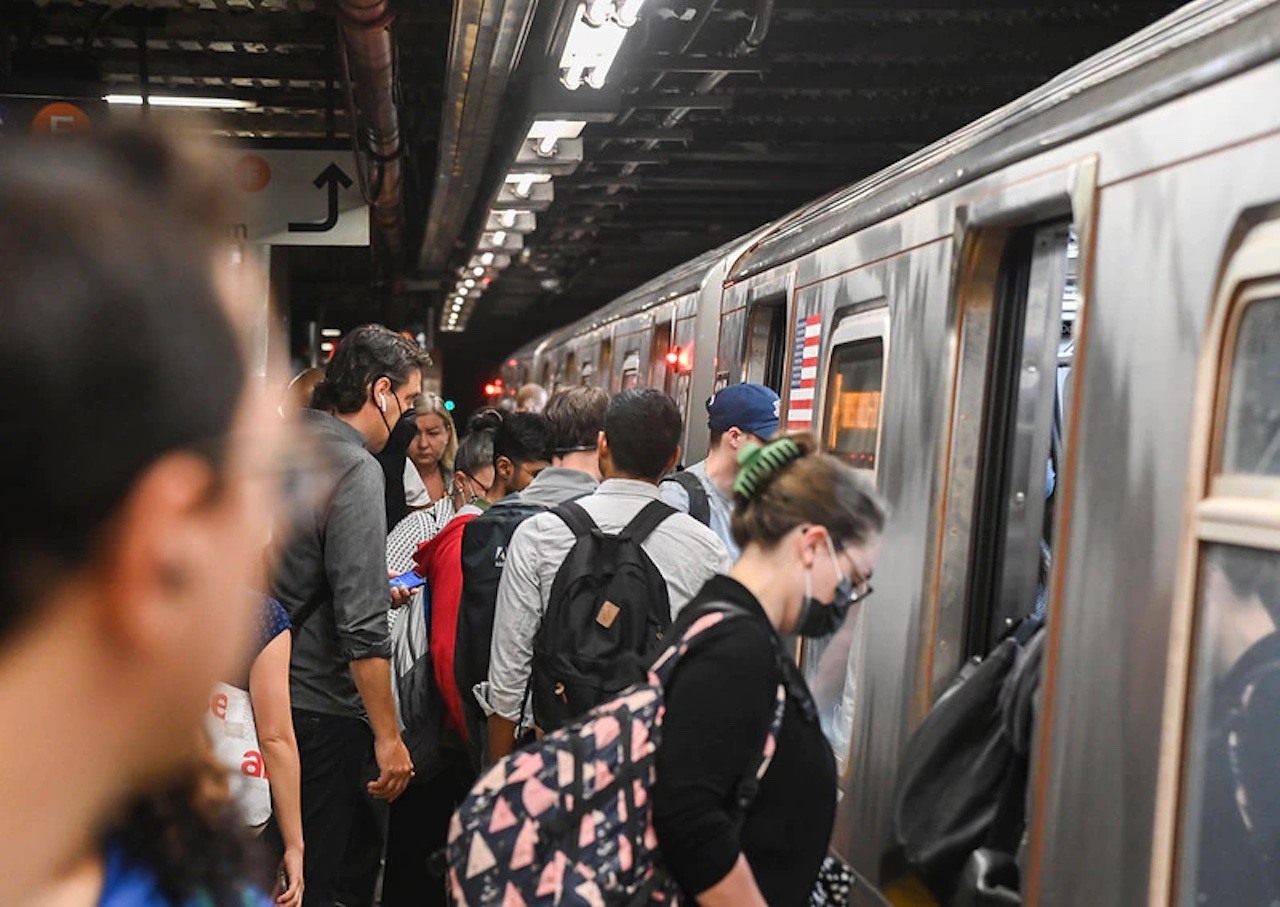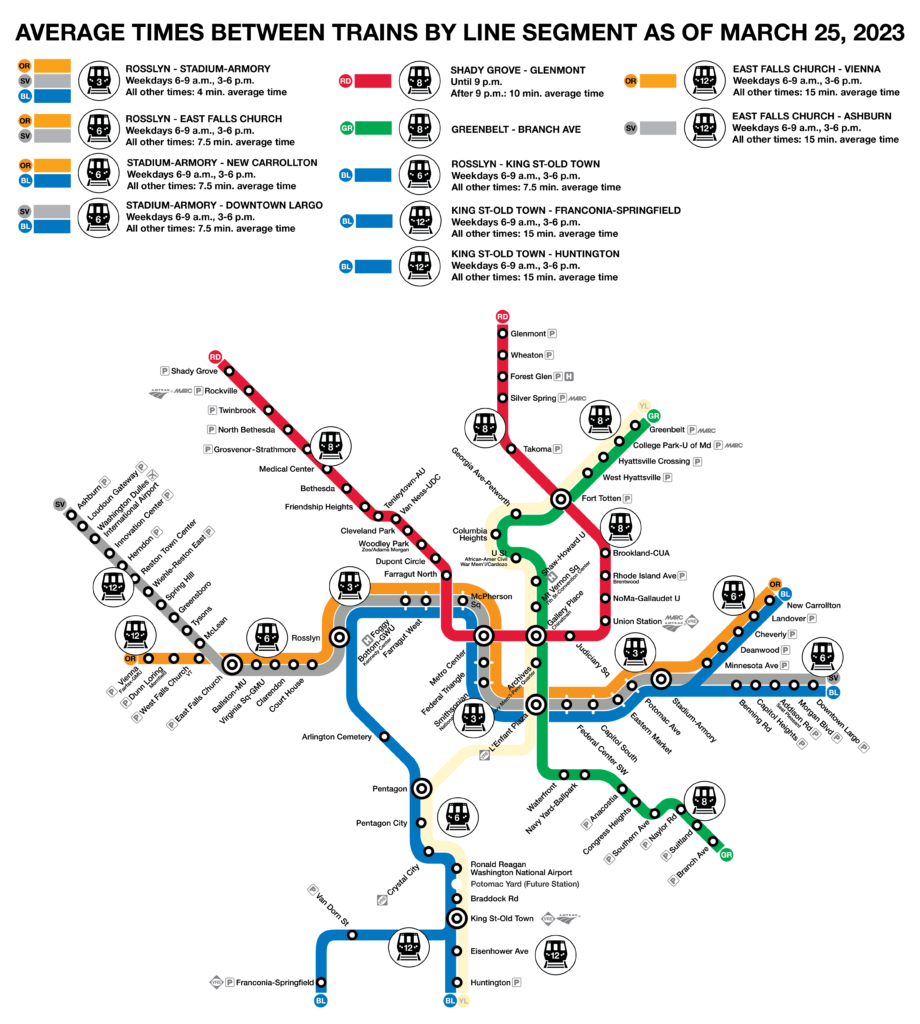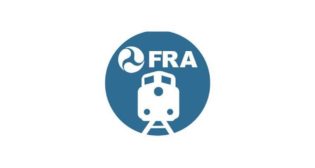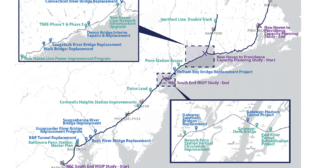
Transit Briefs: NYMTA, WMATA, APTA
Written by Carolina Worrell, Senior Editor
New York City subways reached 3.94 million riders on a single day for the first time since March 2020.
The New York Metropolitan Transportation Authority’s (MTA) subways reach 3.94 million riders on a single day for the first time since March 2020. Also, the Washington Metropolitan Area Transit Authority (WMATA) gets a service boost systemwide amid ridership surge; and the American Public Transportation Association (APTA) releases results from Phase 2 of its Transit Workforce Shortage Study and welcomes hundreds of industry professionals to Washington, D.C., for 2023 Legislative Conference.
NYMTA
The New York MTA announced that the New York City Subway set a ridership record on March 16 with 3,946,210 paid riders, topping the previous record set on December 8, 2022, by 11,000 riders.
According to the MTA, the last time subways carried more than 3.94 million riders was March 12, 2020, when 4.1 million New Yorkers rode the subway.
The record ridership, MTA says, comes as the agency’s contactless fare payment system, OMNY, also reached a major milestone, with subways registering 1.638 million OMNY taps on March 16, surpassing the previous high set the day before on March 15 when 1.61 million subway customers tapped at the turnstyles. This record, MTA says, combined with the OMNY taps registered on buses, surpassed the two-million mark on a single day for the first time ever.
“Two million OMNY taps in one day is a significant milestone for the MTA and also another reason we are creeping up on the 4 million subway rider mark,” said MTA Chair and CEO Janno Lieber. “People who have tried OMNY know, easy tap-and-go with OMNY is the best way to ride the subway and bus, and I am thrilled to see customers making the switch to OMNY in record numbers.”
According to MTA, OMNY continues to grow in market share among New York City Transit customers, with the first one million tap day reached in April of 2022. The MTA reached the 500 million total OMNY tap milestone in September of 2022 when a customer tapped in at Grand Central Terminal. OMNY, the agency says, has now processed cards issued in 192 of the 195 countries that issue bank cards.
According to MTA, OMNY customers now consistently comprise nearly half of all subway riders, with a 40% market share of paid rides. Nearly 100% of all OMNY transactions are made on customers’ own personal devices or cards, making the MTA unique among North American transit systems.
In October, OMNY was rolled out to Reduced-Fare customers, who can now make the switch from MetroCard to riding with their personal device or contactless card. Reduced-Fare customers can make the switch from MetroCard to OMNY seamlessly online with the OMNY digital assistant, which is available 24/7 here.
WMATA
Beginning March 20, WMATA will increase train service across its rail system in time for peak cherry blossom season, the agency announced March 17. Weekday and weekend service will see an infusion of additional trains, which will also run as needed during the Cherry Blossom Festival as crowding is monitored during peak bloom.
The improvements, WMATA says, correspond to growing ridership, with new post-pandemic records being set almost daily. This week, the agency saw its highest ridership since the pandemic, with 337,000 paid trips on March 15, followed by the second highest day on March 16 with more than 335,000 trips. Cherry blossom season, tourism, sporting events, entertainment and increased commuters are driving the trend, according to WMATA.
Service will ramp up across the system through March 25, “providing customers with more frequent, reliable service that makes transfers easier and wait times shorter,” the agency said. Starting first, as of Monday, March 20, customers on the Silver, Blue, Orange, and Blue+ lines will see trains every 12 minutes Monday through Friday during rush hours (6-9 a.m. and 3-6 p.m.). Between Rosslyn and Stadium-Armory, the central part of the rail system where multiple lines overlap, trains will arrive in stations on average every three minutes during rush hours.

On Saturday, March 25, service will improve on the Red Line increasing service to every 8 minutes through 9:30 p.m., seven days a week, instead of just rush hours and midweek. The change aligns with service on the Green Line, which already operates every 8 minutes on weekdays and weekends.
Additional service improvements, the agency says, are expected over the coming months as WMATA staffs up with more train operators, mechanics and maintenance workers, and increases the availability of 7000-series (7K) railcars.
“As we add trains and improve service, more and more people are choosing Metrorail,” said WMATA General Manager and CEO Randy Clarke. “Our teams are working hard every day to get more 7000-series trains in service and hire more people so we can make #YourMetro even better.”
APTA
APTA on March 13 released results from Phase 2 of its Transit Workforce Shortage Study (download below), which builds a framework for the association, its members and its partner organizations to “better understand the workforce shortage’s causes and provides best practices for recruiting, hiring, and retaining transit operations workers.”
Phase 1 was released in October 2022 and focused on the macro causes of the worker shortage; Phase 2 combines information from a survey of current and former transit workers with information from interviews with 18 public transit agencies to provide insight into ways to address the national shortage of transit workers. The report also includes a toolkit for public transportation agencies to use in assessing and improving their workforce development processes to address the worker shortage.
The main findings from the release include:
- “Pay, work schedule, and agency responsiveness are key to retaining and attracting workers.
- “Agencies generally have a clear understanding of why they are struggling to hire or retain workers, and many are already taking proactive steps to close gaps and prepare for the future.
- “Agencies must work to accommodate the changing needs and preferences of the transit workforce. Agencies that have successfully recruited and retained workers have adapted their policies and practices to accommodate their employees’ responsibilities and priorities.”
“Public transit providers across North America face a shortage of operators and mechanics, a crisis that has strained budgets and forced agencies to reduce service,” APTA said. “This shortage is occurring during a period of economic instability and reshuffling exacerbated by the COVID-19 pandemic. Agencies’ ability to respond to the worker shortage has been hampered by inadequate information about its causes and effects.”
“The transit workforce shortage is among the most pressing issues facing our industry,” said APTA President and CEO Paul P. Skoutelas. “The agencies who participated in this study are demonstrating creativity and resilience in addressing their workforce needs. APTA hopes that this document will contribute to the exchange of ideas between agencies and encourage them to find new and innovative ways to maintain the workforce needed to provide essential transportation services to communities across the nation.”
The results of the study were released at APTA’s 2023 Legislative Conference where hundreds of public transportation industry professionals from across the country convened.
Opening day of the annual event featured remarks by Mitch Landrieu, Senior Advisor to the President and Infrastructure Coordinator, The White House; Polly Trottenberg, Deputy Secretary, U.S. Department of Transportation; Nuria Fernandez, Administrator, Federal Transit Administration; Mary Frances Repko, Deputy National Climate Advisor, The White House; as well as panel discussions with other key Administration staff, Capitol Hill staff, and policy experts.
The event includes sessions with federal officials on top public policy issues affecting public transportation, including implementation of the Infrastructure Investment and Jobs Act (IIJA) and Inflation Reduction Act (IRA) and discussions centered around creating jobs, advancing equity, and addressing climate change.



